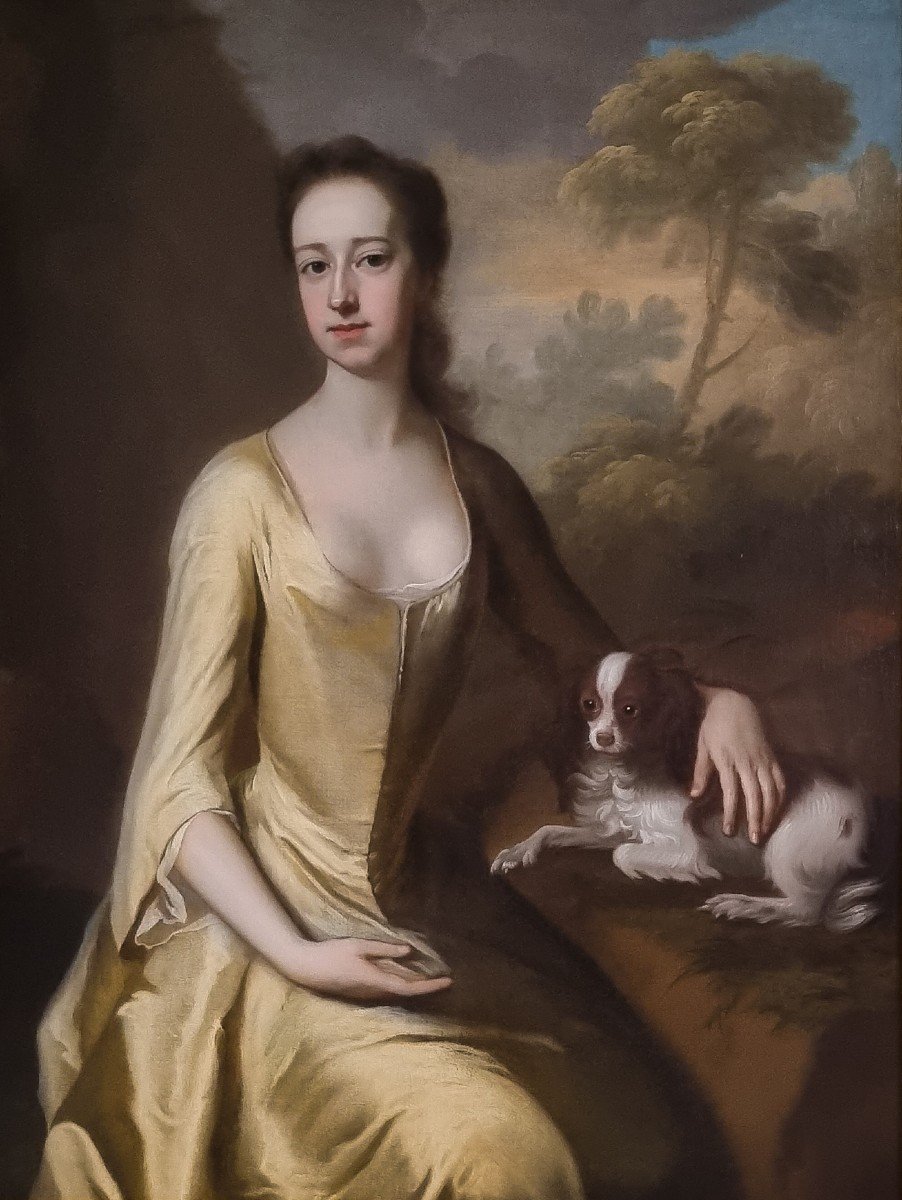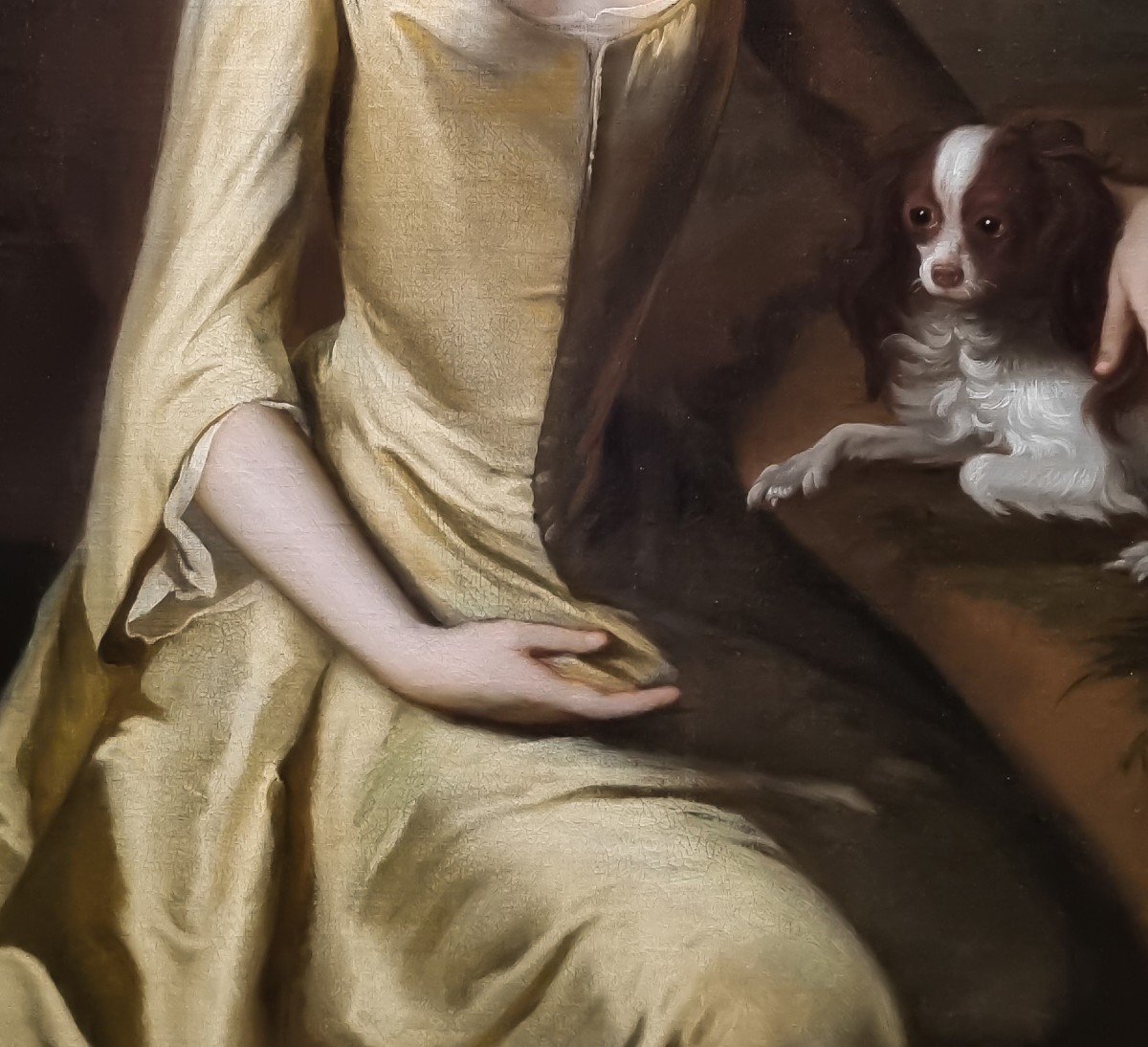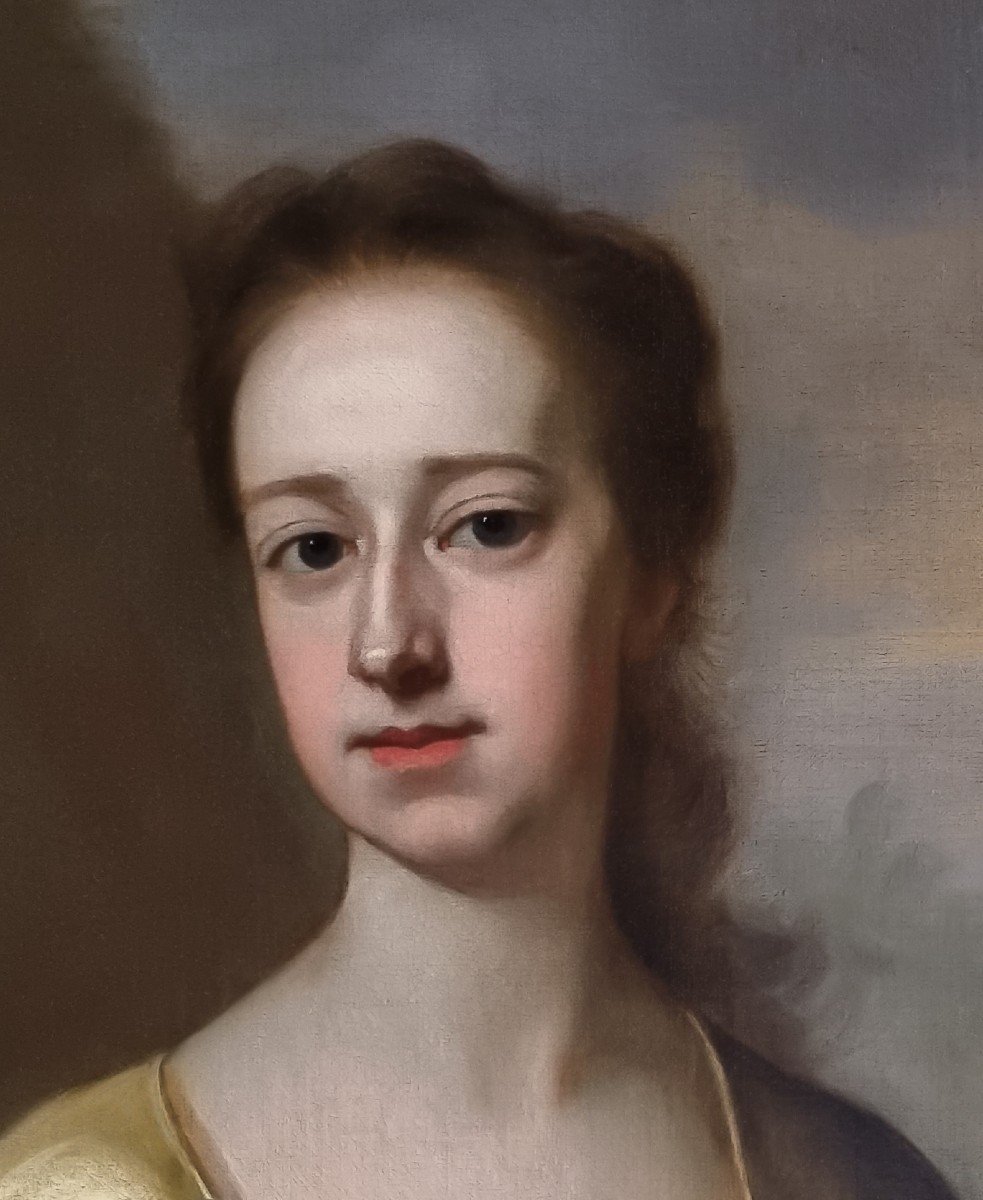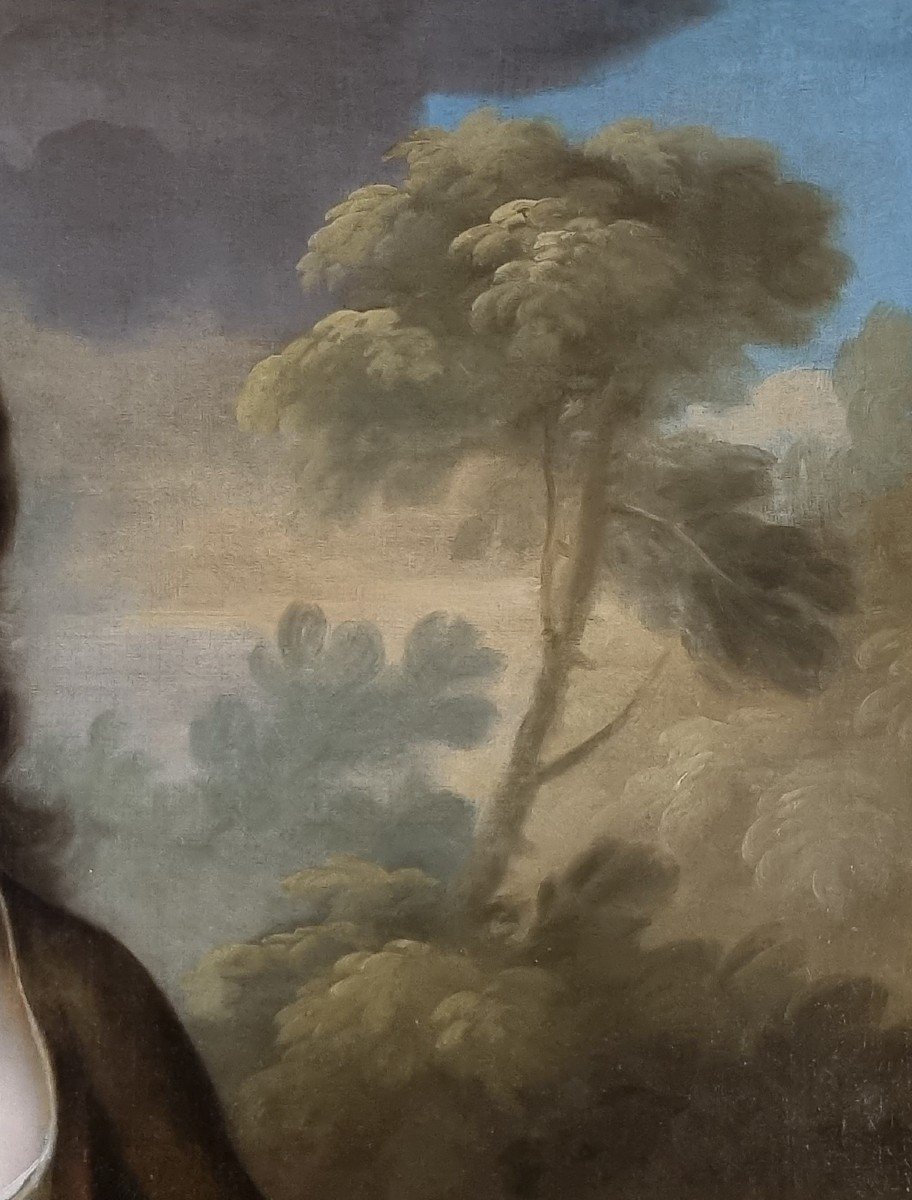"Portrait Of Lady Mary Booth, Later Countess Of Stamford C.1720, Attributed To Michael Dahl (1659-1743)"
Portrait of Lady Mary Booth, later Countess of Stamford c.1720Attributed to Michael Dahl (1659-1743)
This charming portrait is said to represent Lady Mary Booth (1704–1772), later Countess of Stamford. Lady Mary was the only child of George Booth (1675-1758), 2nd Earl of Warrington, and his wife Mary Oldbury, the daughter of a wealthy London merchant. She was instrumental in running her father’s estates, which she inherited, rather than her husband - which was quite unusual for the time.
The portrait was painted by Michael Dahl circa 1720 when Lady Mary was around sixteen years old. Michael Dahl whom by 1700 became the most successful painter in England second only to Godfrey Kneller, painted Lady Mary on several occasions.
In 1736 Lady Mary married her much younger cousin Harry, Lord Grey of Groby (later 4th Earl of Stamford) when he was 20, and she was 32. The two families were already associated by the marriage of George Booth (1622-1684), 1st Baron Delamer, to Lady Elizabeth Grey, daughter of the 1st Earl of Stamford in 1644. Shortly after the marriage Harry’s father died and Harry became the 4th Earl of Stamford, inheriting extensive estates in Leicestershire and Staffordshire as well as the family home in Enville near Stourbridge. The couple moved to Enville Hall in 1739 as the new 4th Earl and Countess of Stamford before having three children.
Her parents did not create a son and when it became apparent there would be no male heir, her father began to teach her everything she needed to know about estate management in readiness for her to assume ownership of the estate one day. Before she was five, he was annotating his accounts: “for the information of my daughter.”
Lady Mary was 54 when her father died and Dunham Massey was given to her. Under Lord Warrington's will Dunham Massey and the Booth estates were vested in two trustees, George and Thomas Hunt, on behalf of Mary during her lifetime (as a woman she could not own the property herself), subject to a proviso that her husband should have no power or control over them. Rather than leaving it to her outright when she married it would not automatically be transferred to her husband.
Lady Mary was highly educated and intellectual. She took a keen personal interest in the development of the estate. She efficiently managed the tenants, the farmers, the household, the accounts and some farming innovations. She supported, financially and practically, new schools, chapels and hospitals alongside finding advantageous marriages for her children. She personally negotiated with the Duke of Bridgewater’s agents to ensure that the building of his new canal had every advantage to herself and her tenants.
She spent her final years Dunham enjoying a life with her children and grandchildren while continuing to run the estate and pursue her interests. On her death in 1772 Dunham Massey passed to her son, George Harry Grey (1737-1819), 5th Earl of Stamford. The fifth and sixth Earls both married into wealthy aristocratic families, the Cavendish-Bentinck and Charteris, which brought them even more land and money. In addition to Dunham Massey they aquired land in Lancashire where they were instrumental in building the town of Ashton-under-Lyne in the late 18th century.
The landscape setting imbues the portrait with a sense of Arcadian simplicity. This draws from the tradition of pastoral literature and by the early 17th century was already popular in art; all educated individuals were familiar with Latin and Greek pastoral poetry. Life in the country was perceived as peaceful, contemplative, and free of worry of hardships, a time to pursue pleasure. When the portrait was painted the pastoral was so ingrained that the mere inclusion of such elements suggested Arcadia to the viewer. Of course, the sitter did not live in such a world.
Presented in a fine carved and gilded period frame.
Michael Dahl (1659-1743) was born in Stockholm and was a painter of exceptional talent. He studied with David Ehrenstrahl, the leading Swedish portrait painter of his day, before embarking on a tour of Europe in 1682 that included London, Paris and Rome. He first visited London and it is thought that he spent some time in Kneller's studio which was an influence on his work. Dahl’s female portraits are distinctly different with better drawing for the heads and a more elegant and straightforward portrait without the excessive use of props and other distracting elements that is often seen in the work of Sir Godfrey Kneller.
In 1698 Dahl he was offered the position of painter to the court of the Swedish King, Charles XII, but preferred to stay and settle permanently in London. A number of Dahl’s compatriots saw England as being relatively stable and prosperous compared to many European countries, and more welcoming than France, for example, of the Lutheran faith then prevalent in Sweden. There, he established an independent studio and by 1700 became the most successful painter in England, second only to Godfrey Kneller. His Scandinavian origins ensured patronage from Prince George of Denmark, and Queen Anne and members of the English court and he worked for the Duke of Somerset painting the Petworth 'Beauties' in the late 1690s. in 1712 he charged £50 for a full length. He died in London in 1743 leaving two daughters (his only son, also a painter, died about three years earlier).
Provenance: Private collection UK
Measurements: Height 135cm, Width 107cm framed (Height 53”, Width 42” framed)



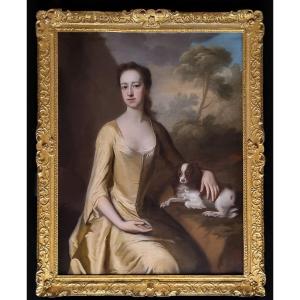
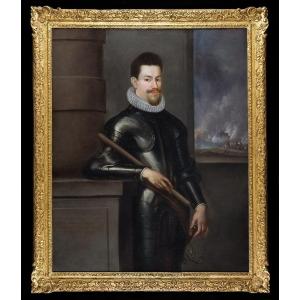
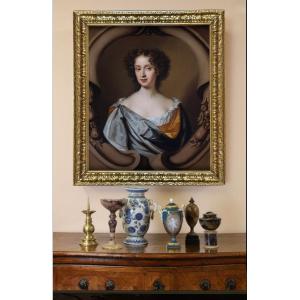



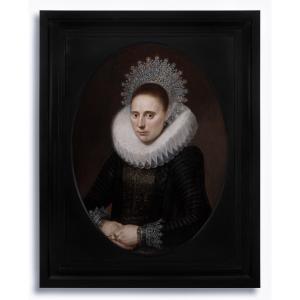
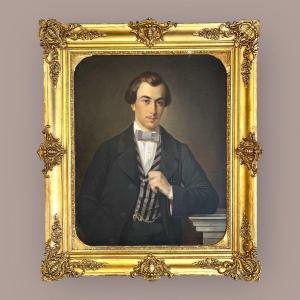

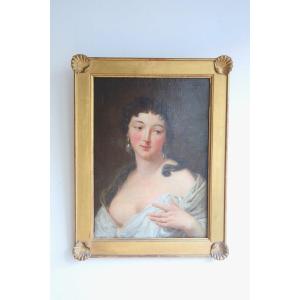
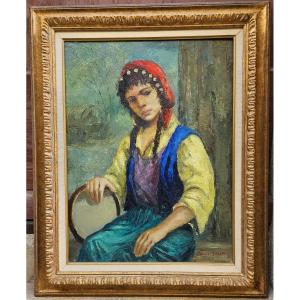
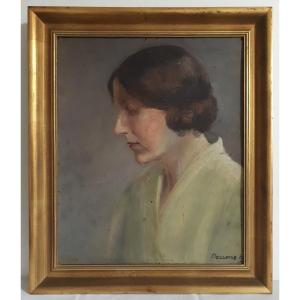
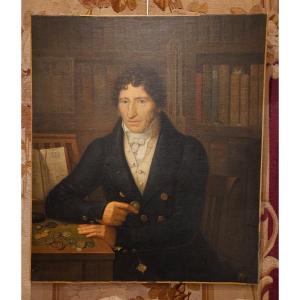




 Le Magazine
Le Magazine Rivista Artiquariato
Rivista Artiquariato TRÉSORS magazine
TRÉSORS magazine


